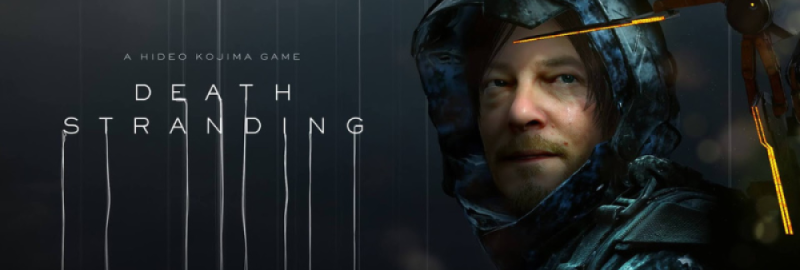
In 2019, video game auteur Hideo Kojima introduced the world to Death Stranding, a title that defied conventional gaming genres and invited players into a post-apocalyptic rendition of the United States. At the heart of its innovative gameplay lies the Social Strand System, a novel approach aimed at redefining player connections within the digital space. This groundbreaking mechanism not only challenges traditional multiplayer concepts but also serves as a commentary on the importance of connectivity in our increasingly fragmented world. This article explores the nuances of the Social Strand System, unveiling how it seamlessly blends gameplay with poignant thematic elements to foster a unique narrative and player experience.
The Genesis of the Social Strand System
The inception of the Social Strand System was Kojima's response to the pervasive sense of isolation in modern society. It represents a seismic shift from competitive interactions towards a more collaborative and constructive gaming environment. Unlike traditional multiplayer mechanisms, which often revolve around direct competition or cooperation, the Social Strand System encourages players to influence each other's journeys indirectly. This indirect interaction lays the foundation for a new form of gaming narrative, one that revolves around the themes of connection, isolation, and the rebuilding of a shattered world.
Structural Dynamics of the Social Strand System

At its core, the Social Strand System is characterized by several key components that work in tandem to foster a sense of connection and community among players. These components not only challenge players to navigate the treacherous terrain of a fragmented America but also to leave lasting imprints on each other's experiences, rendering the journey a collective endeavor rather than a solitary quest.
Landscape and Construction
The post-apocalyptic landscape of Death Stranding is fraught with challenges, from impassable terrains to supernatural phenomena known as Timefall that rapidly ages matter. Players, assuming the role of Sam Bridges, must navigate this hostile environment to deliver critical supplies to isolated communities. This is where the Social Strand System shows its first layer of ingenuity. Players can construct bridges, roads, shelters, and other structures not solely for personal benefit but to aid others on their journeys. Each structure left behind becomes a potential lifeline for future travelers, symbolizing a profound message of hope and solidarity.
Like System
Integral to the Social Strand System is the 'Like' mechanic, which serves as the currency of goodwill among players. Whenever a player encounters a structure, tool, or even a helpful sign left by another player, they can award ‘Likes’ as a token of appreciation. This innovative feedback loop creates a non-competitive, positive reinforcement mechanism that encourages constructive collaboration. The 'Likes' received by players do not translate into traditional game progression benefits but serve as a testament to their contributions to the collective journey, reinforcing the game's overarching theme of connectivity.

Indirect Multiplayer Interaction
The brilliance of the Social Strand System becomes most evident in its approach to multiplayer interactions. Instead of direct engagement, players impact each other’s experiences through what they leave behind in the game world. This includes lost cargo, which players can deliver on behalf of others, sharing resources, or even aiding in the completion of large-scale construction projects that require collective effort. This form of indirect interaction echoes the game’s narrative of rebuilding a fragmented society, emphasizing the idea that while we may walk our paths alone, our actions can unite us.
Narrative and Thematic Resonance
The Social Strand System is not merely a gameplay mechanic but also a narrative device that deepens the thematic layers of Death Stranding. It embodies the game's critique of modern society's hyper-connectivity that paradoxically fosters isolation. Compelling players to help each other in a world torn asunder mirrors our own world's struggles with disconnection and the potential for unity in collective action. The game’s story, intertwined with the Social Strand System, presents a poignant message: the path to reconnecting a fragmented world starts with individual acts of kindness.
Impact on the Gaming Landscape

Since its release, Death Stranding and its Social Strand System have sparked discussions about the future of multiplayer gaming. By blurring the lines between single-player and multiplayer experiences, Kojima has not only redefined what it means to play together but has also introduced a model that, if adopted more widely, could foster greater empathy and collaboration within gaming communities. As players traverse the desolate yet beautiful landscapes of Death Stranding, they participate in a grand experiment in connection, creating a tapestry of shared experiences that highlight the game's underlying message: in a world of walls, bridges can be built.
Conclusion
The Social Strand System in Death Stranding represents a bold step forward in the evolution of video game design and multiplayer interaction. It transcends traditional gaming mechanics by fostering an environment where players are incentivized to support one another through indirect interactions. This system, woven into the narrative fabric of the game, illuminates the power of connections and the potential for collective action to rebuild a fractured world. As we move forward in an increasingly digital age, Death Stranding challenges us to rethink our approach to online spaces and the importance of nurturing positive, constructive interactions. The Social Strand System isn't just a feature of a game; it's a blueprint for a more connected, cooperative future.



Leave a comment
Your comment is awaiting moderation. We save your draft here
0 Comments